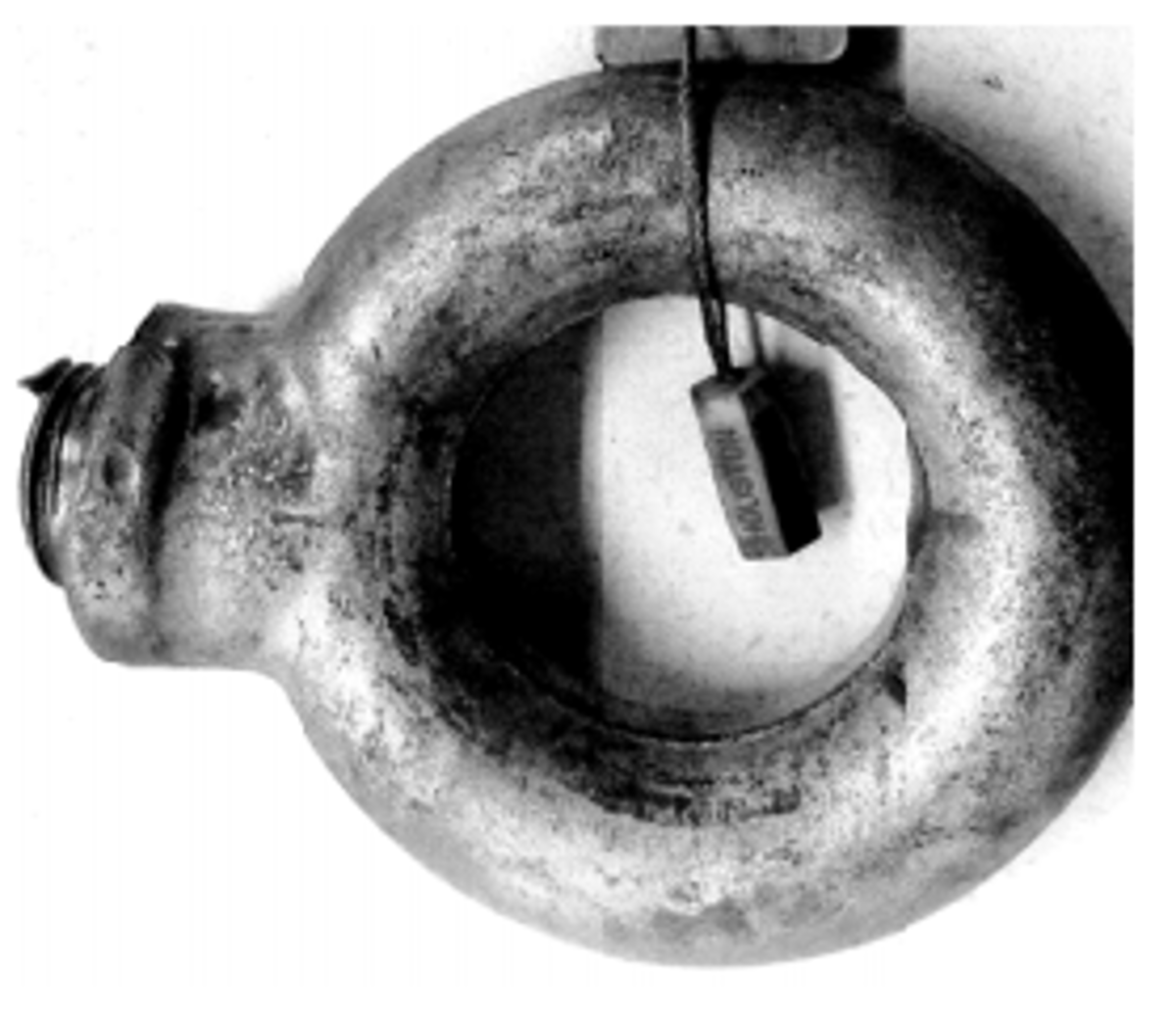Collared eyebolts as lifting equipment
- Safety Flash
- Published on 15 June 2017
- Generated on 9 January 2026
- IMCA SF 15/17
- 2 minute read
Jump to:
NOPSEMA has published Alert 64 relating to the failure of collared eyebolts when used for lifting.
What happened?
A piece of equipment was being lifted during maintenance and repair, when one of the two collared eyebolts used to lift it, sheared.
The piece of equipment, which weighed 21.7 tonnes, fell a distance of 1.2-1.8 m. There were no injuries.

What were the causes of the incident?
NOPSEMA reports that the primary, immediate causes of the incident were:
- The lifting equipment was configured such that the direction of pull was at an angle to the shaft of the eyebolt, so that a “fleet angle” from the vertical was created. Such an angular load reduced the Working Load Limit of the eyebolt to a significant degree.
- The collar of the eyebolt was not fully flush with the body of the piece of equipment being lifted, causing a sheering force due to the fleet angle to be applied to the shaft of the eyebolt, instead of the load being spread across the eyebolt and the surface of the equipment being lifted (as per design).
- A root cause identified was ineffective lift planning.
The full Safety Alert can be found on NOPSEMA’s website.
Members may wish to refer to NOPSEMA’s earlier Safety Alert 59 Lifting and Rigging Plans.
Please also refer to IMCA D060, HSS019, M187, LR006 – Guidelines for lifting operations
IMCA Safety Flashes summarise key safety matters and incidents, allowing lessons to be more easily learnt for the benefit of the entire offshore industry.
The effectiveness of the IMCA Safety Flash system depends on the industry sharing information and so avoiding repeat incidents. Incidents are classified according to IOGP's Life Saving Rules.
All information is anonymised or sanitised, as appropriate, and warnings for graphic content included where possible.
IMCA makes every effort to ensure both the accuracy and reliability of the information shared, but is not be liable for any guidance and/or recommendation and/or statement herein contained.
The information contained in this document does not fulfil or replace any individual's or Member's legal, regulatory or other duties or obligations in respect of their operations. Individuals and Members remain solely responsible for the safe, lawful and proper conduct of their operations.
Share your safety incidents with IMCA online. Sign-up to receive Safety Flashes straight to your email.